PER JONSSON-GILLE describes his model
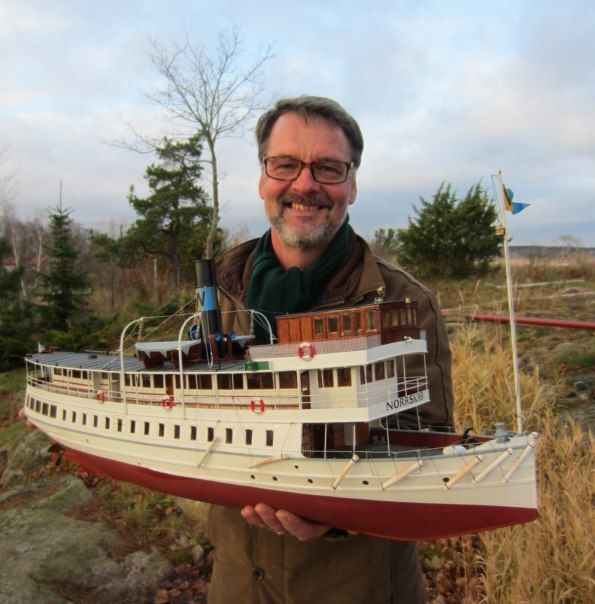
Stockholm once had a great fleet of small white passenger steamships, most of which were scrapped after 1950, but a few have survived. One of these survivors is the S. S. Norrskär built in Gothenburg in 1910. Her name, pronounced ‘Nor-share’ means North Skerry. She is still active in summer traffic from Stockholm to the numerous islands in the Baltic Sea and she was also used in winter traffic as she was, and still is, capable of breaking ice. She is a very popular ship and having had a new boiler installed recently, will continue to steam for many years to come.
In 2006 I found an almost complete set of the original builder’s drawings at the Maritime Museum in Gothenburg. Together with a collection of photos and the possibility to visit the real ship to take measurements and details, it would I thought be possible to build an accurate working model.
Enjoy more Model Boats Magazine reading in the monthly magazine.
Click here to subscribe & save.
Having built an earlier model of the S. S. Norrtelje to a scale of 1:40 (a picture of this model was published in the June 2007 issue of MB), I chose the same scale for S. S. Norrskär, producing a model that is 35 inches long. The project was started early in 2007 and finished five years later in 2012. It would probably have been faster but for my day job as a bassoon player in the Norrköping Symphony Orchestra of Sweden.
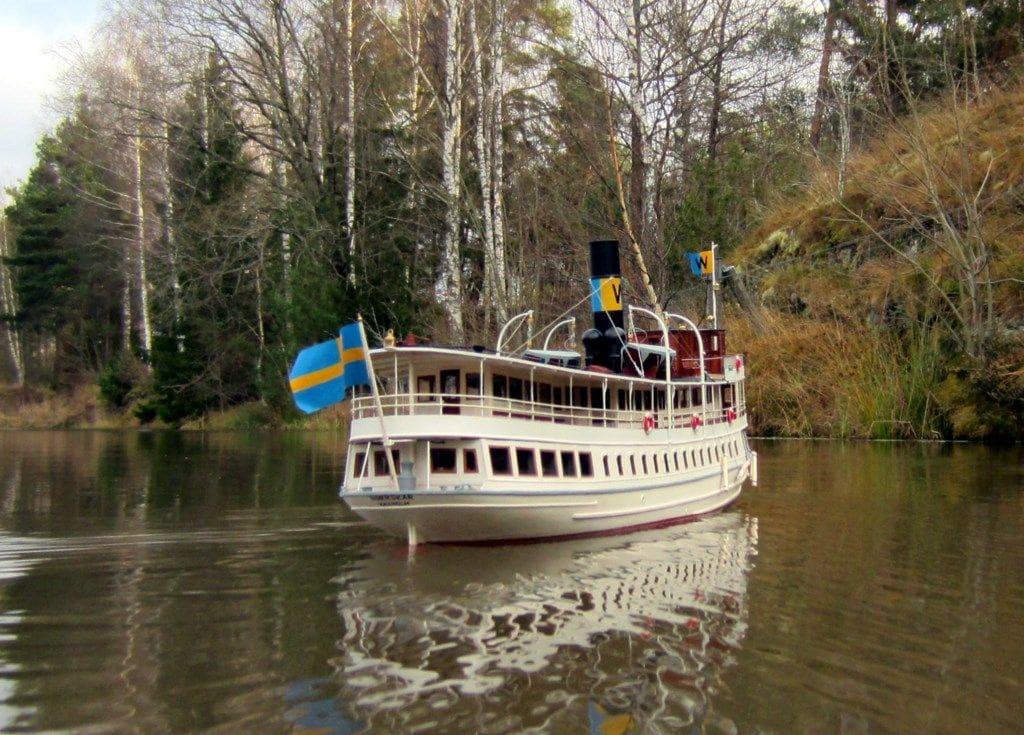
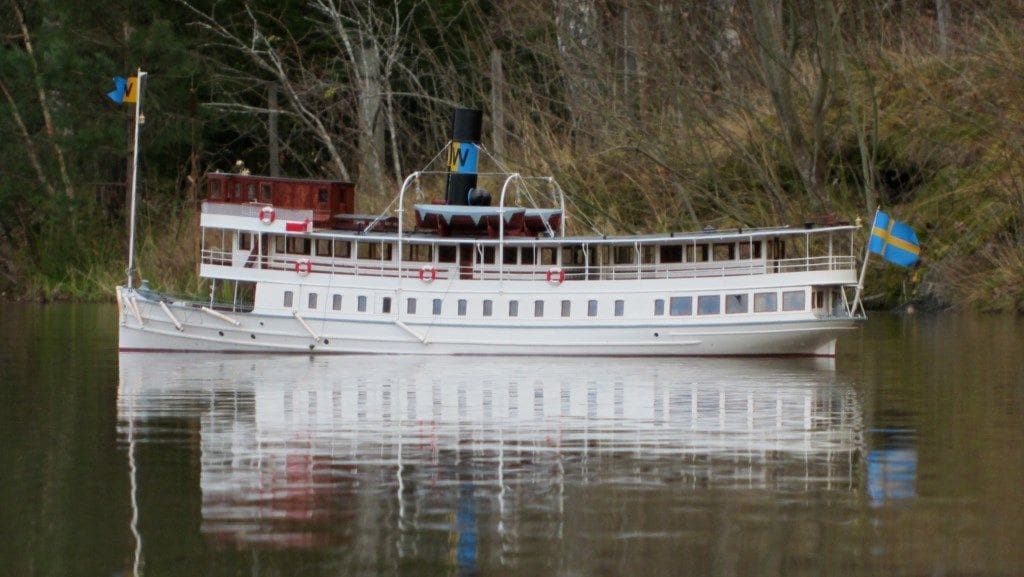
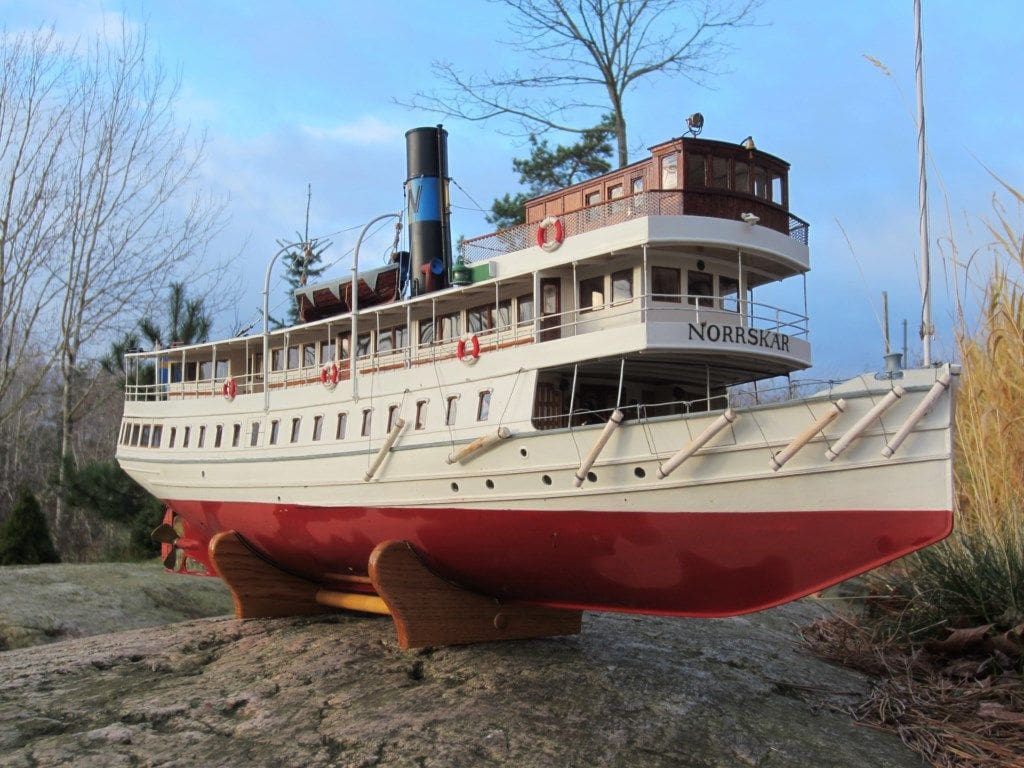
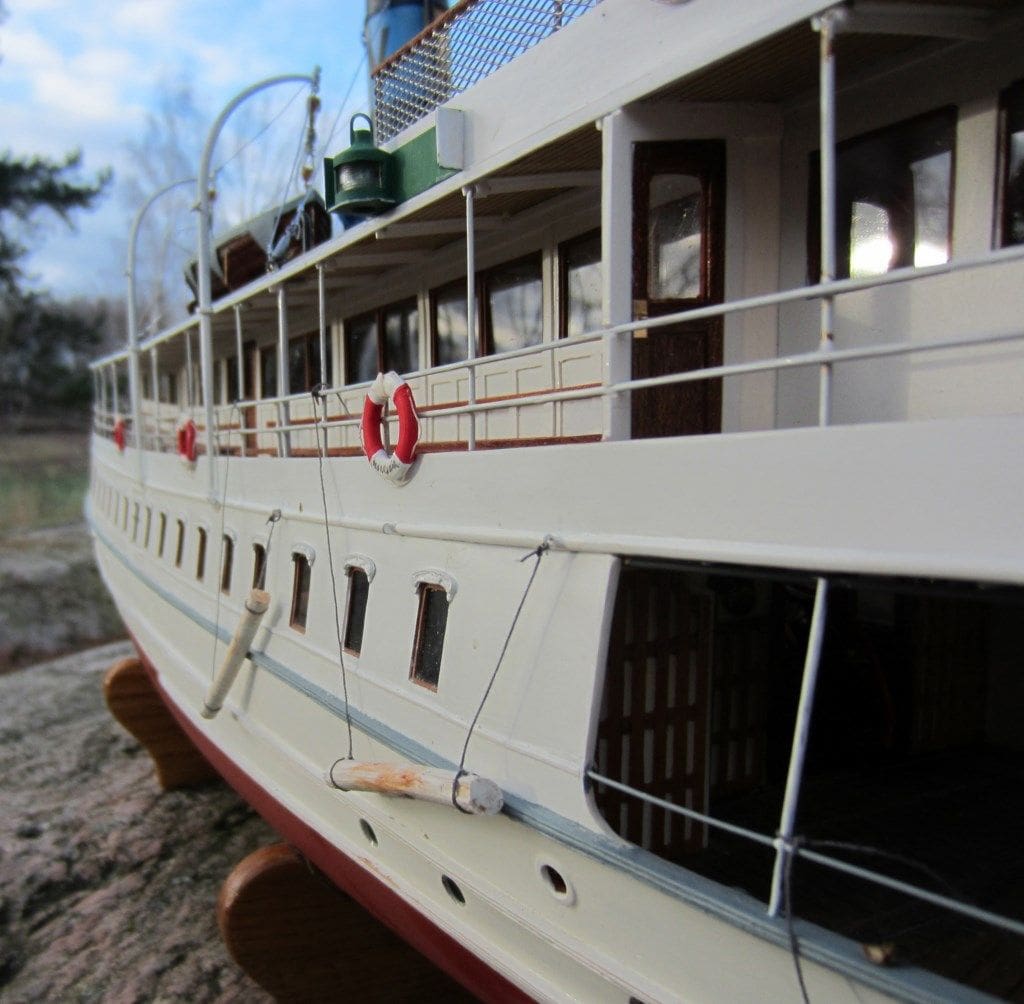
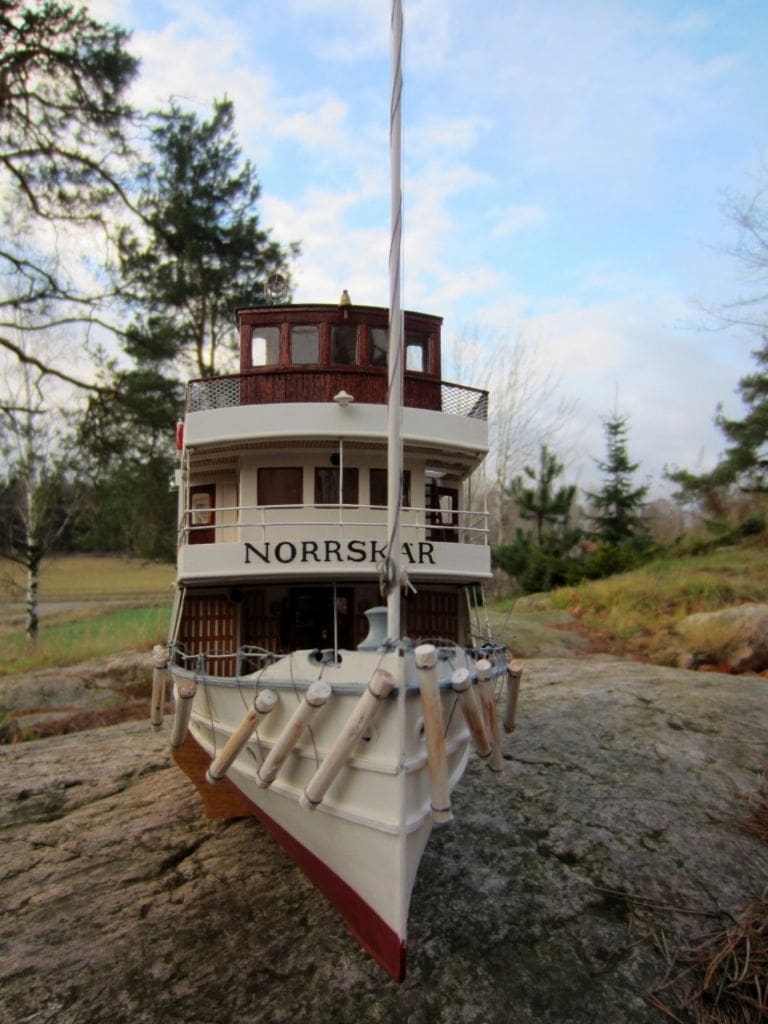
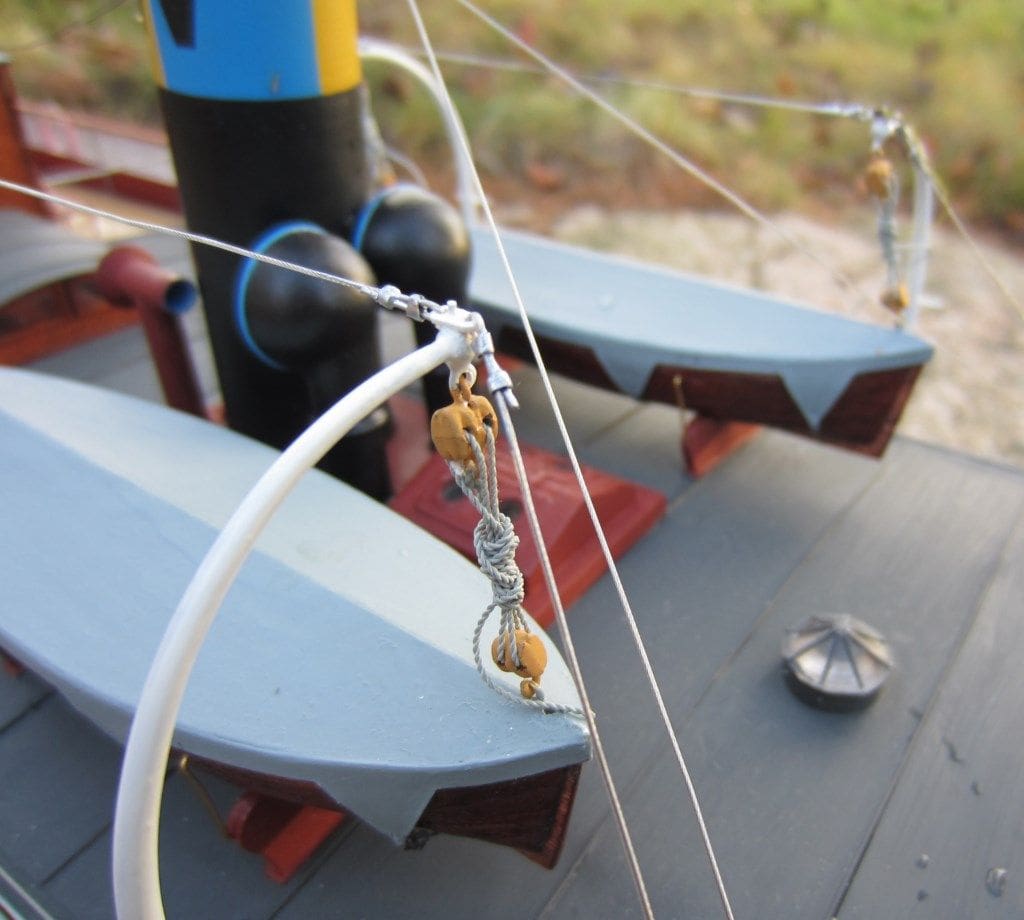
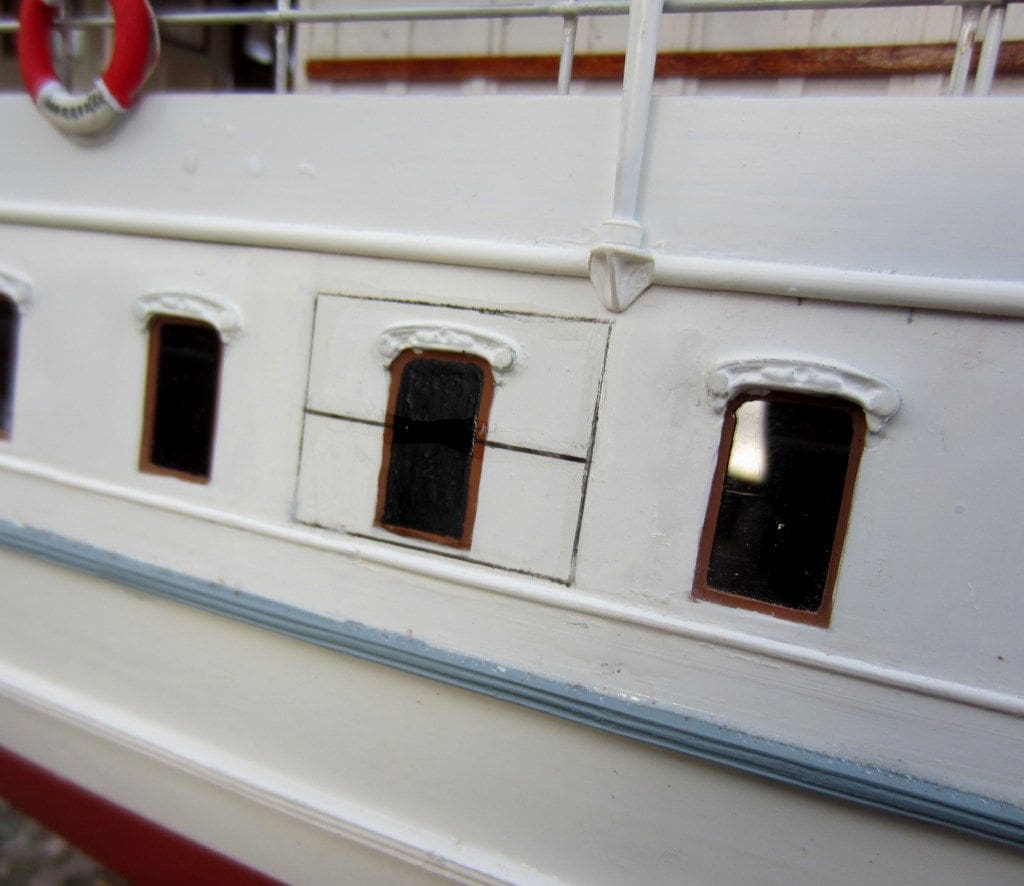
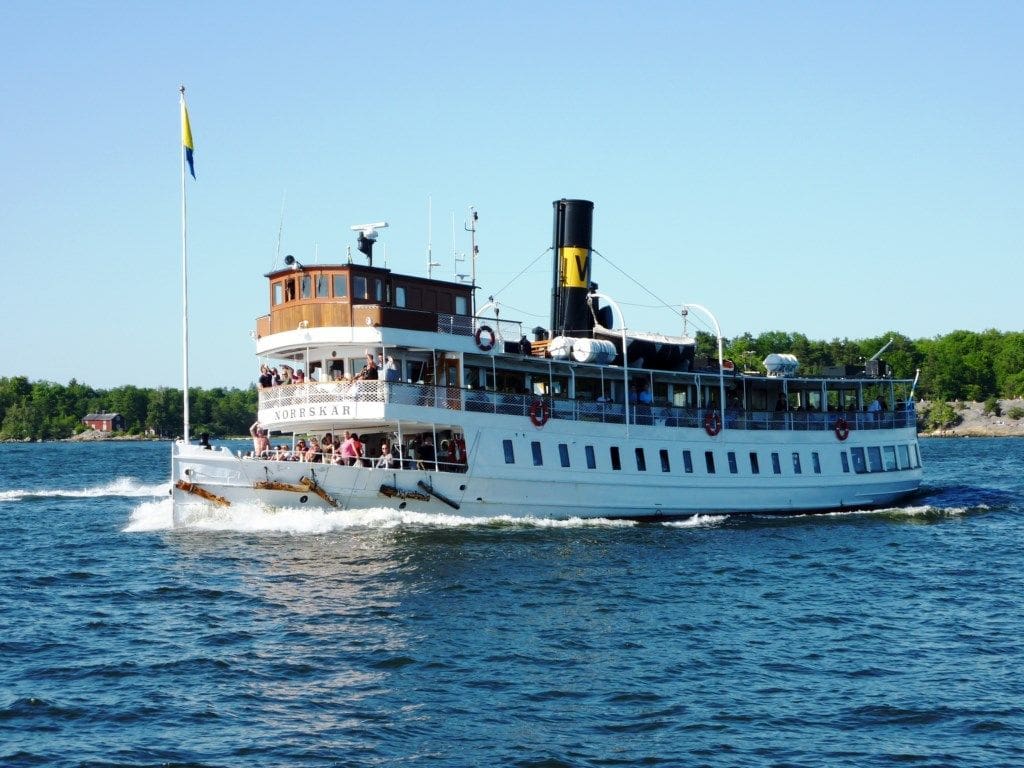
The model
For the ship’s period I chose the end of the 1950’s, after her previously open bridge had been covered with a roof. This made her look a bit top-heavy, which I believe the real ship probably is, but I think that is part of her charm. Later, she was also equipped with radar and modern life-saving equipment on her boat deck which I did not want to include in my model. I also simulated the original steering mechanism which was worked by steam via rods and chains on the boat deck. This has now been replaced by modern electro-hydraulic steering.
The hull is built in the traditional bread-and-butter fashion using Jelutong wood. The stem, keel and rudder post were made of 1.5mm brass and the outside of the hull was sealed with tissue paper and cellulose dope before painting. During my visits to the ship, I noticed that the deck camber was more pronounced on the boat deck than on the lower decks. For me, it is very important to get the sheer and deck camber correct and that feature has been included. A model ship with flat decks looks dull and uninteresting, at least to my eyes, reminding me a bit of an upside down iron.
For the superstructure units, plasticard (styrene) was mainly used as the core material. The wheelhouse though was made from 1mm plywood decorated with strips of mahogany veneer and stained. All the windows are of 1mm clear Perspex. For the lifeboats, lines that corresponded to Lloyd’s standard specifications were used and they are each clinker-built using thin mahogany planks glued over balsa plugs. The boat covers are just painted paper cut to size.
The decks are from 1mm varnished ply with the planking simulated by black ink, all sealed with another coat of varnish. The grating on the foredeck was also ply, but stained with thinned dark brown paint.
All the fittings including the searchlight, lanterns, propeller and bollards, etc. were handmade or turned from brass and Perspex. For the two large ventilators I borrowed a special tool from a friend who is a goldsmith. This particular tool looks like a piece of Swiss cheese with circular indentations of different sizes of bowl. To use it, you silver solder together a cone of copper plate, anneal it and place in an indentation. Then, with a corresponding punch, you can quickly hammer out a bowl which becomes the upper part of the ventilator which is then soldered to a brass tube that forms the shaft. Some plastic padding filler and a bit more filing does the rest. However, the small horn-like ventilators were made from plastic tube.
Above the 35 windows on the main deck there are ornamental rigols. One was carefully soldered together from small brass pieces to make a master which was then gently warmed and pressed into dentist’s wax. The 35 rigols were then easily moulded using fibreglass filler, fettled (cleaned-up) and then glued in place. For the funnel and davit stays, the stainless steel wire often used for necklaces proved to be ideal.
This is a working r/c model with electric drive and two channel radio and a 6v motorcycle battery provides the power and is also the main ballast.
What’s next?
With enough unused Jelutong wood remaining from this project I have already assembled another hull for a model of an American tugboat of the Pennsylvania Railroad Company, c1915. The drawings have come from a USA publisher and an American friend has supplied an article from the Pennsylvania Railroad Society. Apparently, their fleet of tugs were once used for towing the railroad barges around New York and maybe this model will have steam power like the original. Anyway, I shall make my mind about that in due course.
Photos by the author and his father, L. Vahllof, as well as G. Friberg.




